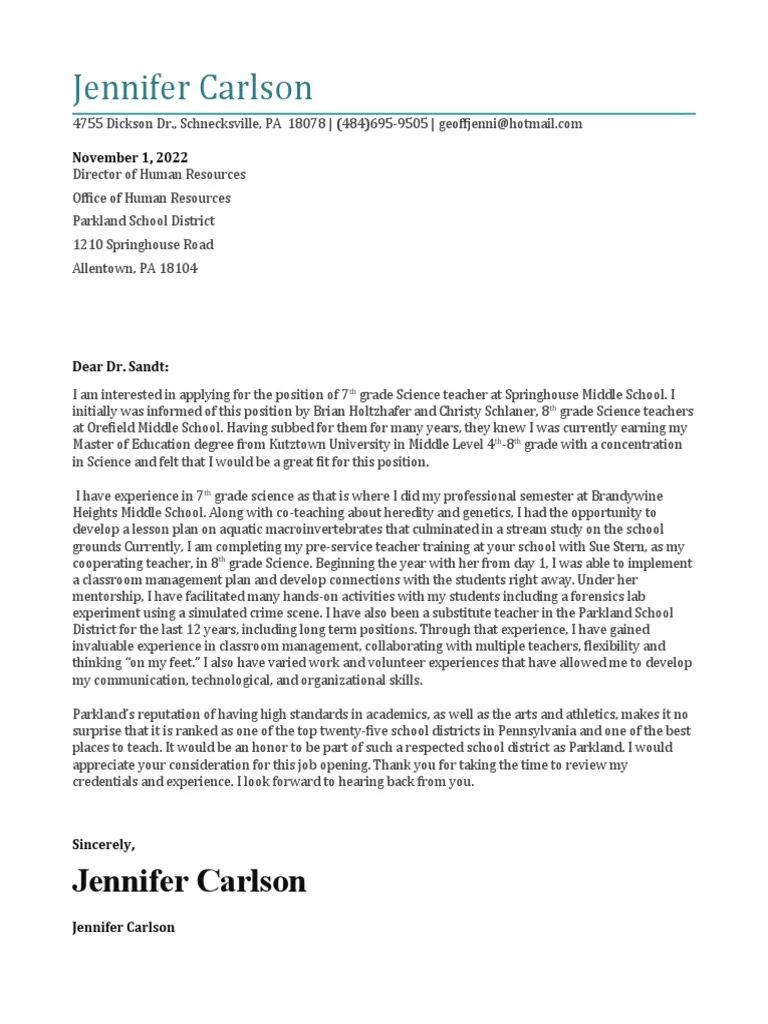Why a Stellar Cover Letter Matters for Student Teachers
As a student teacher, your cover letter is your first introduction to a potential employer. It is a crucial document that allows you to showcase your skills, experiences, and passion for teaching beyond what is listed on your resume. In a competitive job market, a well-crafted cover letter can significantly increase your chances of landing an interview and ultimately securing a teaching position. A compelling cover letter demonstrates your professionalism, attention to detail, and ability to communicate effectively. It provides an opportunity to explain your career goals, highlight specific achievements, and demonstrate your understanding of the school’s needs. A strong cover letter goes beyond simply restating your resume; it tells a story, capturing the reader’s attention and making them want to learn more about you. A well-written cover letter is the key that opens the door to your teaching career.
Key Components of a Winning Cover Letter
A winning cover letter is composed of several key elements that work together to create a compelling narrative. Each section serves a specific purpose, contributing to the overall impact of your letter. Understanding these components and how to effectively use them is essential for creating a cover letter that stands out from the competition. The layout, tone, and content should be carefully considered to ensure that your letter reflects your personality, skills, and aspirations. From the header to the closing, every word counts. A well-structured cover letter is easy to read, professional in tone, and engaging for the reader. It quickly highlights your key strengths and how they align with the school’s requirements and values. By paying close attention to each component, you can create a cover letter that effectively represents you.
Header Section
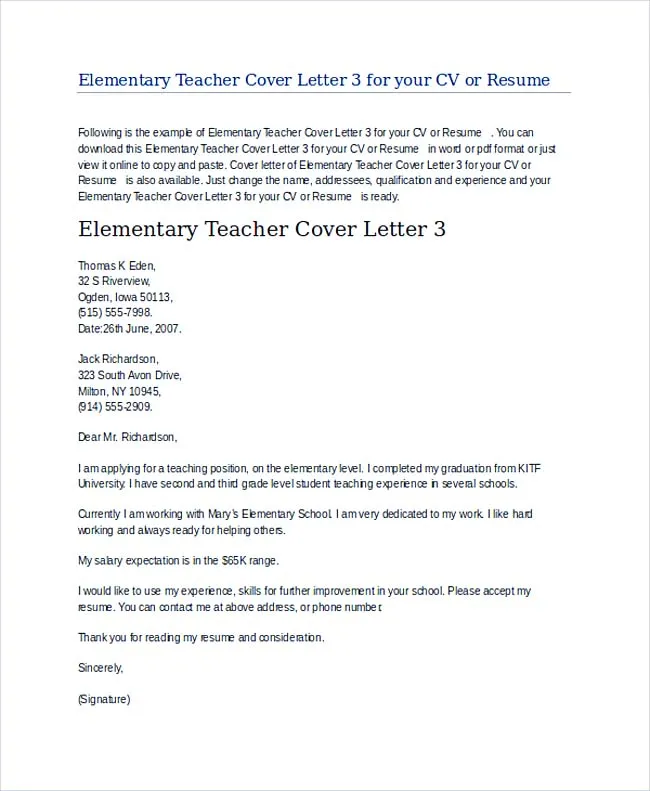
The header of your cover letter is the very first thing a hiring manager sees, making it critical to get it right. It sets the tone for the entire document and provides essential contact information. The header should be professional, clean, and easy to read. Begin with your full name, clearly displayed at the top. Include your contact details, such as your phone number and email address. Ensure that your email address is professional and appropriate for a job application. The header also typically includes the date and the recipient’s information. The header should be properly formatted, and easy to understand, making a positive first impression and ensuring that the recipient can easily reach you. This section is your chance to showcase your attention to detail, a vital skill for any teacher.
Your Contact Information
Your contact information should be easily accessible and up-to-date. Include your full name, phone number, and professional email address. Avoid using an unprofessional email address; create a new one if necessary. Consider including a link to your LinkedIn profile if you have one. This allows the hiring manager to quickly access additional information about your experience and skills. Make sure all the information is accurate and current. Errors in your contact information will make it impossible for the school to reach you, potentially losing your chance. Ensure the header is clean and the formatting is consistent with the rest of the letter. Your contact information is essential for a smooth communication process.
The Recipient’s Details
Always address your cover letter to a specific person if possible. Research the school’s website or use LinkedIn to find the name of the hiring manager or principal. Addressing your letter to a specific person shows that you have taken the initiative to learn more about the school and its staff. If you cannot find a specific name, use a professional title such as “Dear Hiring Manager” or “Dear Principal.” Ensure the recipient’s name and title are accurate. Using the correct recipient details demonstrates your attention to detail and respect for the school’s hiring process. This personalization makes your letter stand out. The recipient’s details are essential for creating a positive initial impression.
Opening Paragraph Make a Strong First Impression
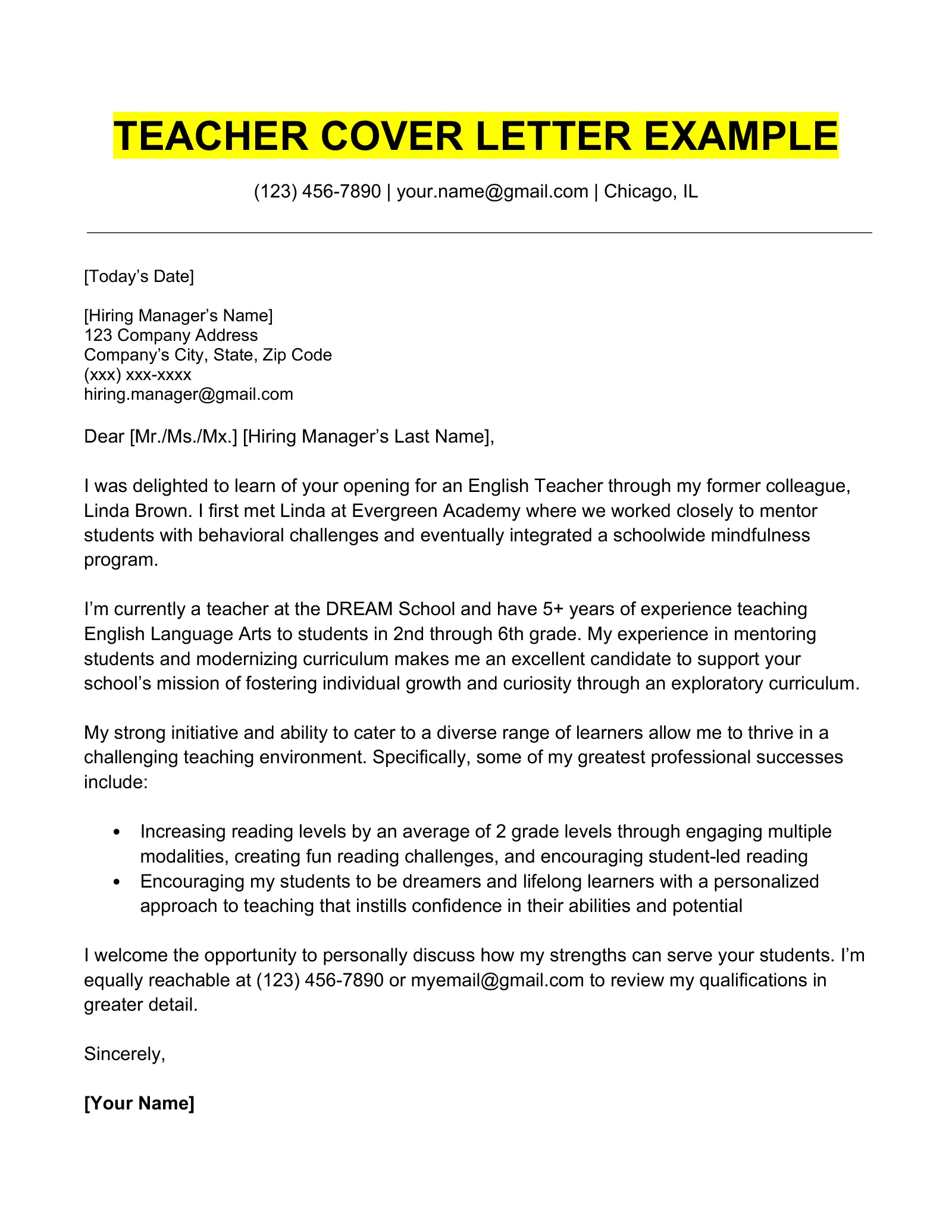
The opening paragraph is your opportunity to immediately capture the reader’s attention. It should be concise, engaging, and clearly state the purpose of your letter. Begin by stating the position you are applying for and how you learned about the opening. If you were referred by someone, mention their name. Briefly highlight your key qualifications and why you are a good fit for the school. The opening paragraph should showcase your enthusiasm and interest in the role. Avoid generic opening statements; instead, tailor your introduction to the specific school or position. Make it clear why you are interested in this particular role. Create a memorable first impression; your opening paragraph sets the tone for the entire letter. Ensure it piques the reader’s interest and makes them want to read more.
Highlight Your Passion and Enthusiasm
Demonstrate your passion for teaching and your enthusiasm for the specific school. This is a critical element of the opening paragraph. Share what excites you about the school’s mission, values, or programs. Show your genuine interest in working with students. Explain what drives your commitment to education. Your passion can set you apart from other candidates. Share a personal anecdote about why you are drawn to teaching. A story can make your application more relatable. Show your commitment to providing a positive learning environment. Highlighting your enthusiasm will help you make a memorable first impression. Your passion will show you are excited about the role.
Body Paragraphs Show Your Skills and Experience
The body paragraphs are where you showcase your skills, experiences, and qualifications. Each paragraph should focus on a specific aspect of your experience, supporting it with concrete examples. Provide evidence of your abilities by sharing anecdotes and achievements. Tailor each paragraph to the specific requirements of the teaching position. Use keywords from the job description. The body paragraphs give you the chance to explain how your skills match their needs. Do not merely restate your resume; expand on your experiences. Show the hiring manager what you have done. Use the STAR method (Situation, Task, Action, Result) to structure your examples. Your body paragraphs should be well-structured and easy to read. Focus on providing concrete examples of your skills.
Showcasing Relevant Skills and Experiences
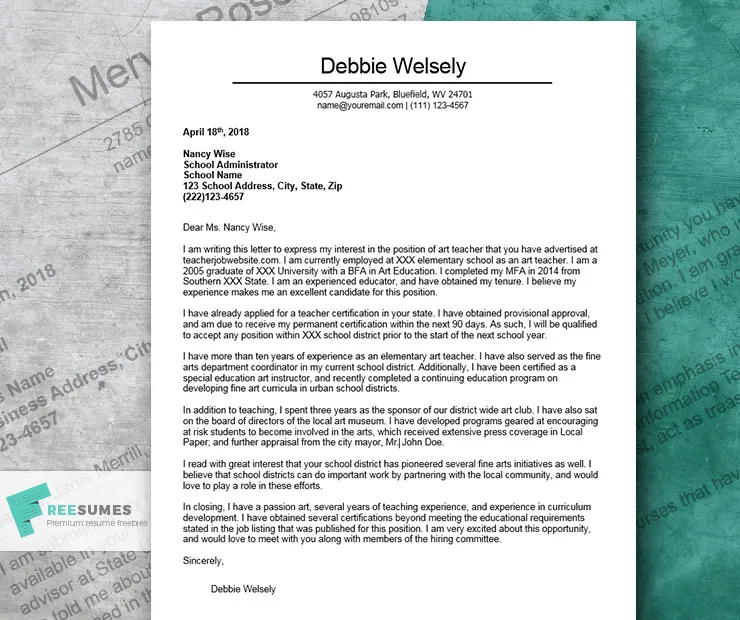
Focus on skills and experiences that are most relevant to the teaching position you are applying for. Highlight your experiences with lesson planning, classroom management, and student assessment. Quantify your achievements whenever possible. For example, instead of saying “Improved student test scores,” say “Increased student test scores by 15% through differentiated instruction.” Provide details on any specific teaching methodologies or technologies you have used. Mention any specialized training or certifications you have. Emphasize your accomplishments in areas that align with the school’s priorities. Tailor your skills. Your experiences should closely match the requirements of the role.
Classroom Management Skills
Classroom management is a critical skill for any teacher. In your cover letter, demonstrate your ability to create a positive and productive learning environment. Describe your strategies for managing student behavior. Explain how you establish classroom rules and expectations. Show how you handle conflicts and maintain a respectful atmosphere. Mention any specific classroom management systems or approaches you have used, such as positive reinforcement or restorative justice. Provide examples of how you have successfully managed challenging behaviors. Mention how you create a structured and organized learning environment. Your classroom management skills will show your capability to guide students.
Lesson Planning and Curriculum Development
Highlight your experience with lesson planning and curriculum development. Describe your approach to creating engaging and effective lessons. Explain how you align your lessons with educational standards and objectives. Mention any specific curriculum areas you have experience in. Showcase your ability to differentiate instruction to meet the needs of diverse learners. Provide examples of successful lesson plans. Discuss how you assess student learning and provide feedback. Detail your ability to create engaging lesson plans. Your lesson planning will show your structured approach.
Differentiation and Inclusive Practices
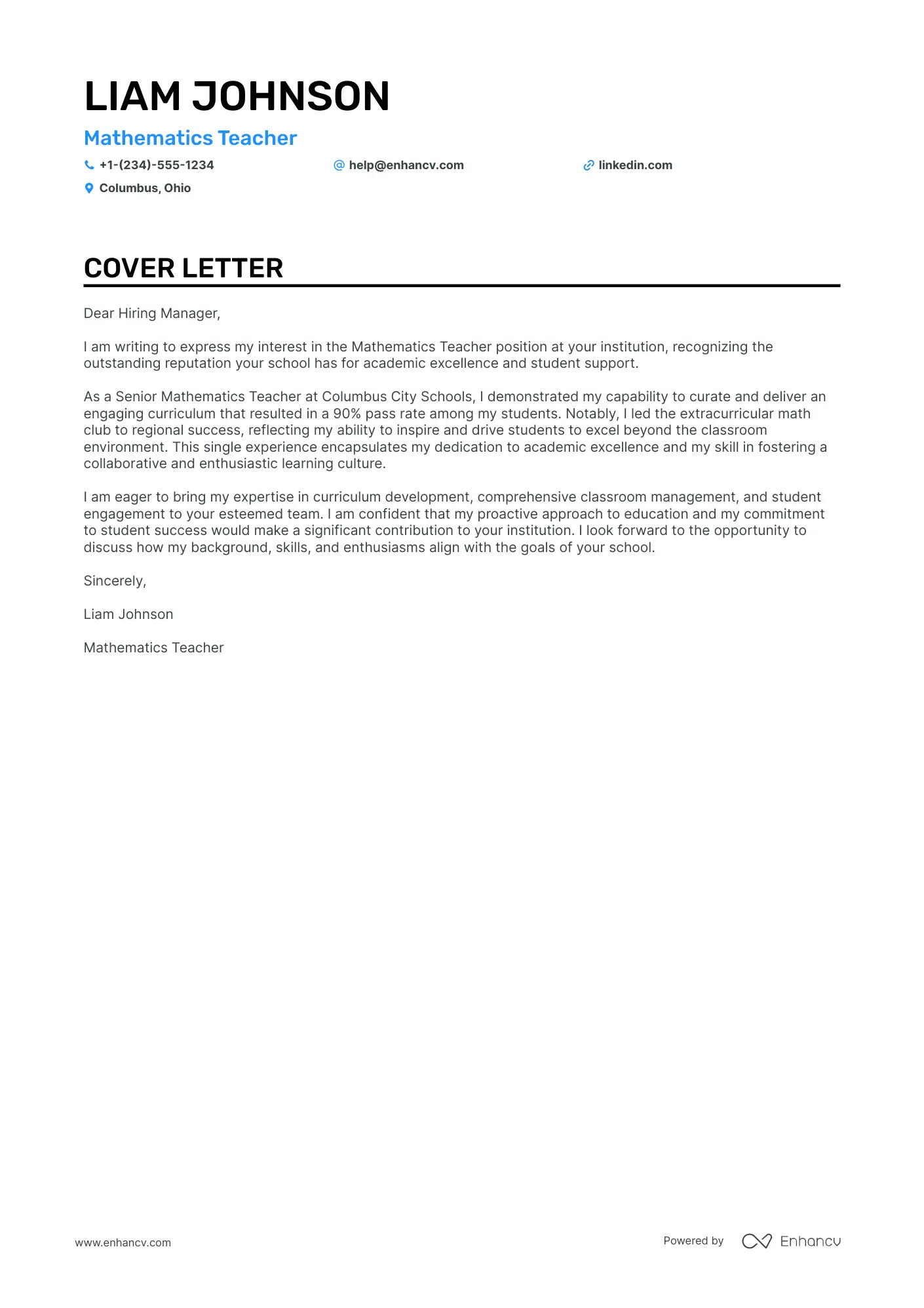
Demonstrate your understanding and commitment to differentiation and inclusive practices. Explain how you modify your lessons to meet the needs of students with diverse learning styles and abilities. Describe your experience with special education students or students with individual education programs (IEPs). Mention any specific strategies you use to support English language learners. Show your ability to create an inclusive classroom environment where all students feel valued and supported. Provide examples of how you have adapted your teaching. Your approach to inclusivity is important for a welcoming classroom.
Use of Technology in Education
Highlight your experience with educational technology. Describe your ability to integrate technology into your lessons. Mention any specific educational software, platforms, or tools you have used. Show how you leverage technology to enhance student engagement and learning. Provide examples of how you have used technology to assess student understanding. Demonstrate your skills in using technology for educational purposes. Your use of technology will show your skills in innovation.
Quantifying Your Achievements
Whenever possible, quantify your achievements to make them more impactful. Use numbers and statistics to demonstrate the results of your efforts. For example, instead of saying “Improved student engagement,” say “Increased student engagement by 20% through the use of interactive activities.” Provide specific data about student performance, test scores, and project outcomes. Quantifying your achievements makes your cover letter more persuasive. The use of numbers helps you to showcase your accomplishments. Your results make your application more clear.
Closing Paragraph A Call to Action
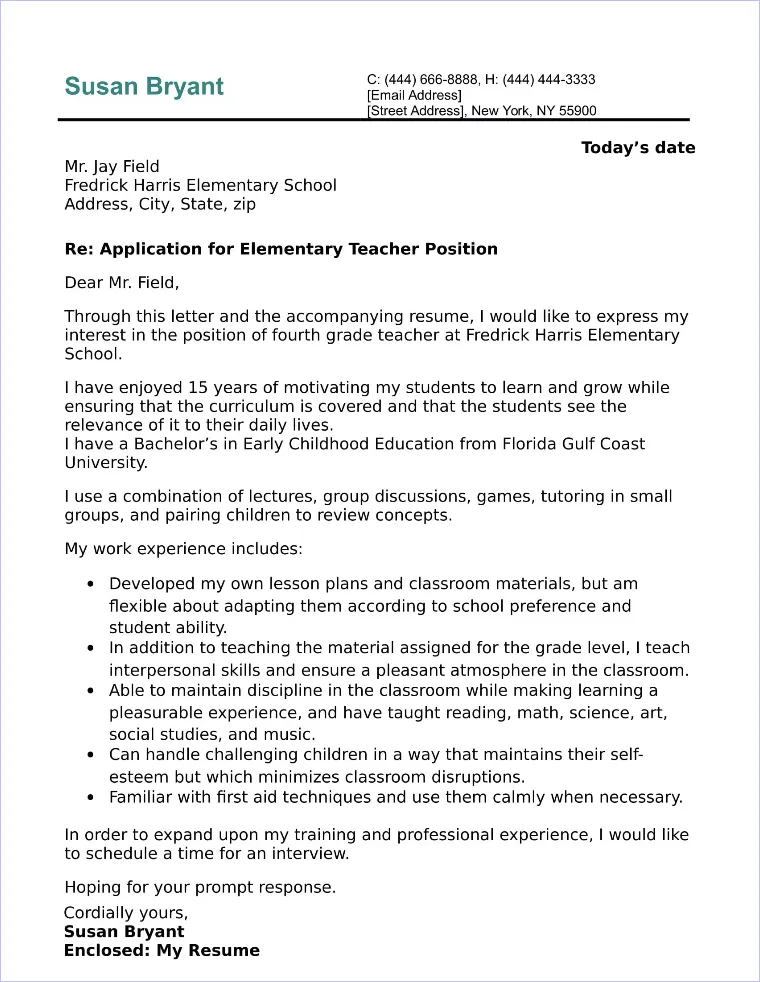
The closing paragraph is your last chance to leave a lasting impression. It should include a call to action, expressing your interest in the position and your availability for an interview. Reiterate your enthusiasm for the opportunity and thank the hiring manager for their time and consideration. State your availability for an interview and provide your contact information again. Proofread your closing carefully. Your call to action should be direct and professional. Make your availability clear and show that you are eager to move to the next stage. It will help you to follow up with the school if you are considered for the role.
Express Your Gratitude
Express your gratitude to the hiring manager for their time and consideration. This shows professionalism and respect. Thank them for considering your application. Be sincere in your expression of gratitude. It is essential to thank the hiring manager for reading your cover letter. This is a polite and professional gesture. Your expression of gratitude makes a positive impression.
Proofread and Edit Your Cover Letter
Proofreading and editing are critical steps. Check for typos, grammatical errors, and formatting issues. Make sure your cover letter is free of errors. Proofread your cover letter multiple times. Ask a friend, mentor, or career advisor to review your letter. Pay attention to the tone, clarity, and conciseness of your writing. Ensure your cover letter flows smoothly. The editing and proofreading process helps polish your document and ensure your message is clear. Errors make a negative impression. Proofreading ensures you make a professional impression. Make your writing clear and concise and make sure the tone is correct.
Common Mistakes to Avoid in Your Cover Letter
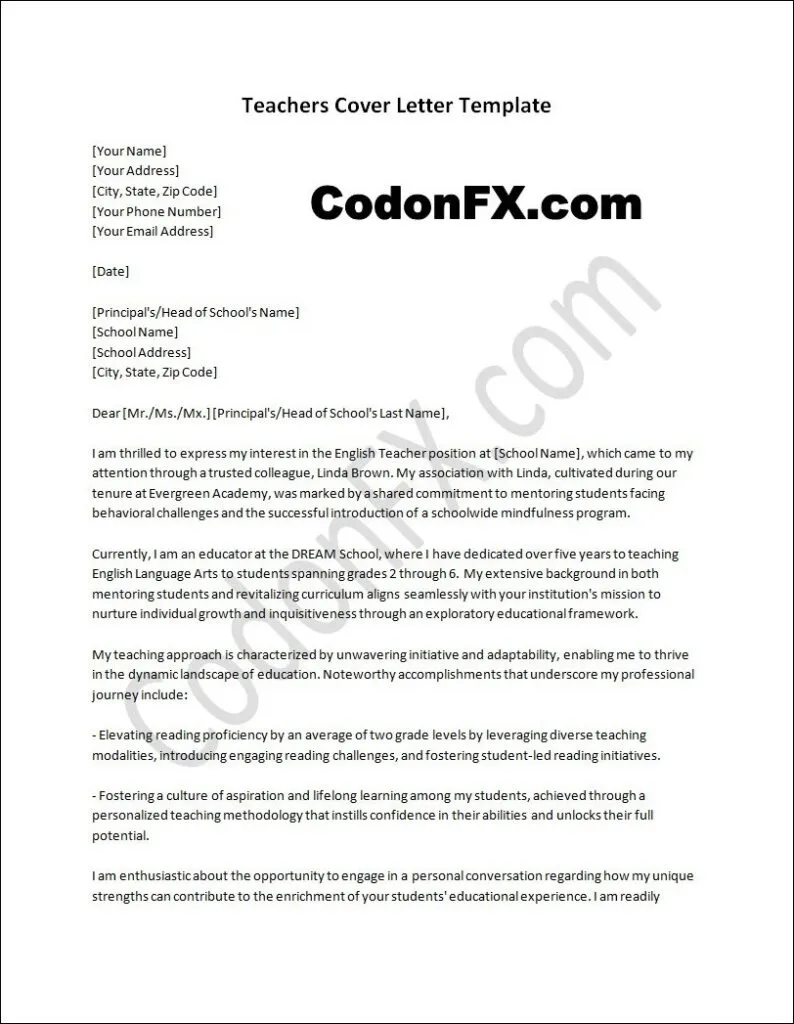
Avoid common mistakes that can undermine your cover letter and hurt your chances of getting an interview. Recognizing these mistakes will help you create a more effective cover letter. Be mindful of the following errors to improve your application. Avoiding these issues helps you create a stronger application.
Generic Language and Lack of Personalization
Avoid using generic language that could apply to any teaching position. Tailor your cover letter to the specific school and position you are applying for. Research the school’s mission, values, and programs. Demonstrate your understanding of the school’s needs. Personalize your cover letter by mentioning specific aspects of the school that appeal to you. Generic letters make you look like you didn’t put effort into applying. Avoid generic statements; be specific about your interests in the role.
Typos and Grammatical Errors
Typos and grammatical errors make a negative impression. Always proofread your cover letter carefully. Use spell-check and grammar-check tools. Ask someone else to review your letter. Errors show a lack of attention to detail. Proofread your cover letter before submitting. Errors can significantly hurt your chances.
Focusing Too Much on Yourself
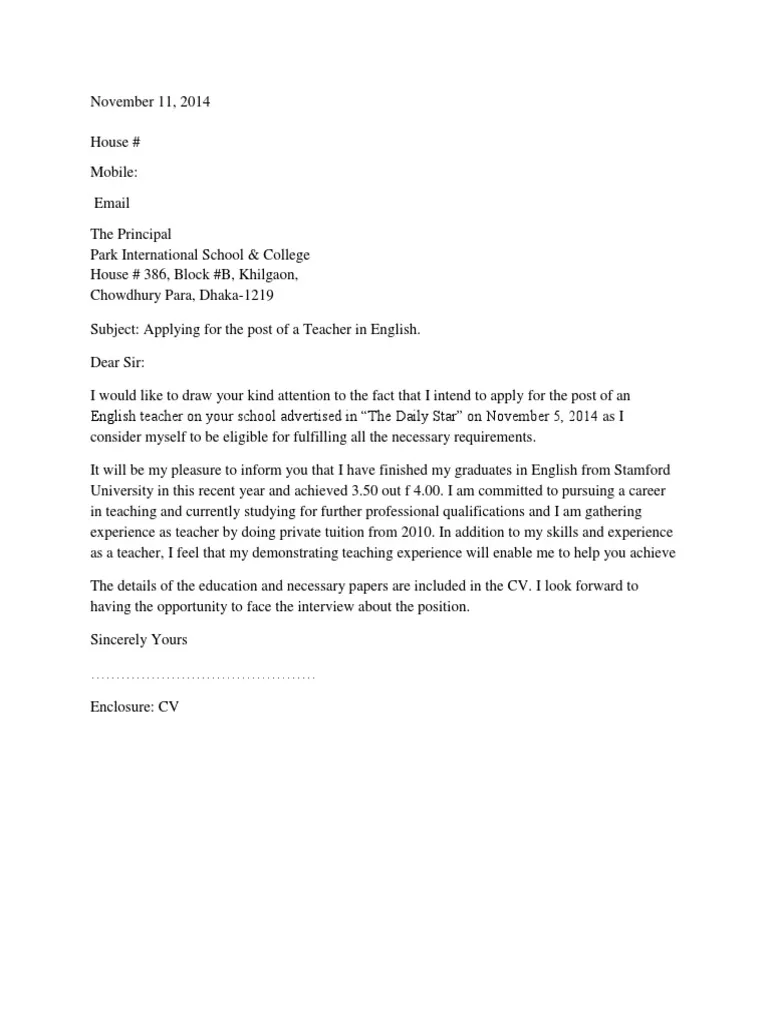
While it’s important to highlight your skills and experiences, avoid focusing solely on yourself. Frame your accomplishments in terms of how they benefit the school and its students. Focus on how you can meet the needs of the school. Make sure to address how your skills and experience aligns with the school. Show how you can contribute to their team. The focus should be on how you can help their students and the school.
Cover Letter Examples for Student Teachers
Reviewing cover letter examples for student teachers can provide valuable insights and inspiration. Look for examples that demonstrate strong writing, tailored content, and a clear presentation of skills and experiences. Use these examples as a guide to create your own cover letter. Take note of the structure, tone, and language used in these examples. Remember to adapt the examples to your specific situation and the requirements of the teaching position. Reviewing examples can help with the writing process. You can use the examples to create your cover letter.
